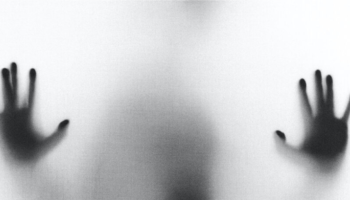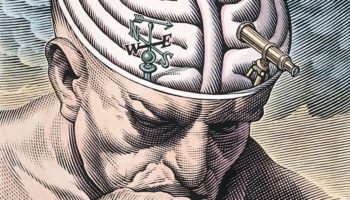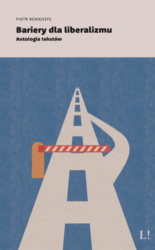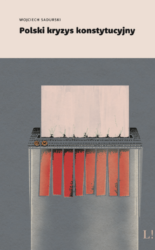In the face of Europe’s biggest so called ‘refugee crisis’ since WWII, many right wing and centrist politicians are using Islamophobia as a way to leverage policy-making in the West, to the detriment of human rights. The so called ‘refugee crisis’ reflects a crisis within Europe, which fights with itself how to define Europe in terms of openness and closeness to refugees knocking at the doors of Europe.
Islamophobia in the West
Islamophobia, particularly in its link to nationalism, has precedents in the West. Indeed, even anti-Semitism as the main element of nationalist thought in Nazi Germany has not completely faded away. In the 1980s and 1990s, racist attacks against refugees and foreigners intensified. In the late 1990s and by 9/11, Islamophobia or anti-Muslim racism spread out across Europe.
Since that time, Islamophobic discourse has achieved a hegemonic position in the Western hemisphere. For many years now, politicians, especially on the far right, have made use of Islamophobia in their election campaigns; these include the Front National in France, the Freedom Party in Austria, Vlaams Belang in Belgium, the Sweden Democrats in Sweden, etc. Moreover, especially within the last 15 years, many centrist parties have either adopted parts of these discourses or have implemented laws which reflect Islamophobic discourse.
Be it the ban of mosques and/or minarets, the ban of the hijab, surveillance programs, or discriminatory laws like the Austrian 2015 Islam-law; they all reflect an image of the imagined dangerous Muslim, who threatens Western societies.
It is an established theory in racism studies that racism tells us nothing about the victim of racism, the imagined ‘other’, but rather tells us something about the racist.
Hence, one has always to be reminded that, e.g. the most votes for a ban on minarets in Switzerland were in those cantons where the least number of Muslims lived. Islamophobia thus becomes a tool for politicians to mobilize people for their own goals like winning elections. Stirring hatred and dividing people against an imagined threat is a suitable way to achieve such a mobilization.
This is the case for the Freedom Party in Upper Austria, which created a slogan for its election campaign in September 2015 saying “Asylum Chaos and Islamization – no way forward.”
At the same time, Islamophobia may also reflect an ideological worldview revealing the wish for a racially pure nation state or a Christian Europe. This may be a possible interpretation for a quotation by Margus Tsahkna, the conservative minister of social affairs in Estonia, who argued in favor of preferring Christians: “After all, we are a country belonging to Christian culture”.
Ewa Kopacz, then prime minister of Poland, described her country as a Christian country and sees herself particularly responsible to help Christian people. This was not merely an isolated populist statement, but one which has deeper implications. According to the country’s immigration agency, “religious background will have [an] impact on their refugee status applications.
In Hungary, where masses of refugees are located, and the Schengen treaty is threatened most by the construction of frontiers, the nationalist Prime Minister Viktor Orbán stated: “Those arriving have been raised in another religion, and represent a radically different culture. Most of them are not Christians, but Muslims […] This is an important question, because Europe and European identity is rooted in Christianity. Is it not worrying in itself that European Christianity is now barely able to keep Europe Christian? There is no alternative, and we have no option but to defend our borders”.
Hence, he was explicitly excluding Muslim refugees: “We don’t want to [let them in], and I think we have a right to decide that we do not want a large number of Muslim people in our country”.
Islamophobia in Today’s Refugee Crisis
A common strategy uniting all EU member states has not yet come into being; every nation state is thus left quite alone in dealing with the immigration of refugees. This has the effect that currently, it seems, even the Schengen treaty, which allows for unimpeded travel within the EU designated zone is under threat. The current so called ‘refugee crisis’ thus has become a crucial moment for the European Union.
Generally, the Eastern and South-Eastern European countries are the first stages for refugees coming from Afghanistan, Iran, Syria and Iraq, while a majority of them try to continue on to Germany. Hence, the ‘border countries’ of the European Union are of special interest in terms of their dealings with the issue. It is especially noteworthy that Eastern European countries are, on average, home to a much smaller number of Muslims than Western European countries.
France is home to an estimated 10 percent of Muslims; Austria, Belgium, Germany, and Switzerland host about 6 percent. In contrast, with the exception of countries with a native Muslim community like Bulgaria and Greece, Eastern EU-member states have a small number of Muslims, often even less than 1 percent. But Islamophobia has become a central issue in the course of the refugee-debate.
Prime Minister Robert Fico of Slovakia, where only 14 out of 331 applicants were given refugee status, argued that Christian arrivals were less likely to stir fears among the local population. This statement came at the backdrop of Slovakia’s small number of only 10,000 Muslims, 0.2% of the whole population.
Fico might have only given way to pressure from the far right, who had demonstrated in the weeks prior to his statement, “against the Islamization of Europe.” Other Islamophobic groups like the “Bloc Against Islam” managed to collect 145,000 signatures on a petition against allowing Muslim immigrants into the Czech Republic.
Instead of defending human rights, Czech President Milos Zeman responded that “refugees from a completely different cultural background would not be in a good position in the Czech Republic”.
In a next step, politicians in the US as well as in many European countries started connecting the issue of terrorism to the refugee issue. Officials of the US’s homeland security committee continue to admit concern over Syrian refugee placement efforts, fearing terrorists could enter the US. “The most rigorous screening” is applied to detect possible terrorists among Syrian refugees.
During the US-presidential election campaign, GOP-candidate Donald Trump called for surveillance of ‘certain mosques’ and a Syrian Refugee Database.
Washington Post journalist Ishaan Tharoor compares this hysteria towards Muslims to the so called ‘refugee crisis’ facing Jews shortly before World War II: “No matter the alarming rhetoric of Hitler’s fascist state – and the growing acts of violence against Jews and others – popular sentiment in Western Europe and the United States was largely indifferent to the plight of German Jews”.
Thaoor argues that Western countries were very restricted in letting Jews in and were mostly doing it for selfish reasons, e.g. in sectors where they needed workers. He thus concludes that “Europe’s fear of Muslim refugees echoes rhetoric of 1930s anti-Semitism”.
This comparison is part of a longer debate, which exceeds the scope of this commentary. Yet it is noteworthy, since some scholars argue that Islamophobia is to some extent a project surface of a hidden anti-Semitism.
A passing view at the most prominent Islamophobic webpages provides insight into the prevailing anti-Muslim racist worldview that exists in the midst of the refugee debate.
To take one example, right Wing political activist Pamela Geller tells us about a video from Hungary, where she identifies “Muslim ‘refugees’ flooding Europe, shouting ‘Allahu Akbar’ (which she interprets as a declaration of war)”. She calls the refugees “hostile invaders,” who “are not in any real or dire need” and urges the media “to blame migrants for their own actions,” while expressing fear that “the welfare states cannot finance half the planet”. For Geller, we are not speaking about real refugees, but rather of Muslims “from the jihad hotspots of Syria, Afghanistan and Iraq,” who comprise an “immigration jihad”.
Other Islamophobic webpages call it “Terrorism hijra”. In Geller’s view, mainstream media wants us to believe that “if you disagree with letting all these people into your country, you are a heartless hateful racist bigot”. But a passing view of the European refugee-debate with all the Islamophobic voices by established politicians reveals that these Islamophobic views have become quite mainstream.
Another Islamophobic webpage argues that immigrating Muslim men plan to marry more than one woman and then “take advantage of the social welfare system […] Once in Germany the women request social welfare benefits, including the cost of a separate home for themselves and for their children, on the claim of being a ‘single parent with children’”.
The immigration wave would lead to a demographic shift in the population and an enormous increase in the number of Muslims. This welfare conspiracy theory is developed in such an exaggerated way that this webpage states: “Islamic Sharia law is advancing rapidly throughout Germany, with Sharia courts now operating in all of Germany’s big cities,” while “government officials are ‘powerless’ to do anything about it”.
It is this Islamophobic discourse, which comes from fringe far right groups, that is being echoed in the way many politicians above talk and walk.
Conclusion
While the European Union as a whole does not seem to be ready to deal with the biggest so called ‘refugee crisis’ since World War II, given that there is no coordinated EU effort for dealing with this issue, the respective nation states are left on their own.
In many of these nation states, not only high-ranking politicians from nationalist and right wing political parties and the opposition, but also in the ‘Conservative Christian’ camp and indeed many in power, reproduce Islamophobic discourse strategies. It is important to clearly state that many of the politicians who are spreading this kind of Islamophobic thought are being criticized by international organizations and by local NGO’s.
These forces are welcoming the refugees and are working on a national level. What can be observed in this debate on Muslims in the midst of the so called ‘refugee crisis’ is an indication of the prevalence of Islamophobic discourses. These discourses are embedded in different contexts.
Some of them propose, in a culturalist, neo-racist way, to exclude Muslims based on the assumption of an imagined Christian Europe they want to purify. Others legitimate their Islamohobic positions by referring to conspiracy theories of an alleged “Islamization of the West” and link the threat of terrorism to the current challenge of the so called ‘refugee crisis’.
These discourses not only indicate the personal views of the respective politicians, but are also being implemented by the bureaucracy in some countries.






















